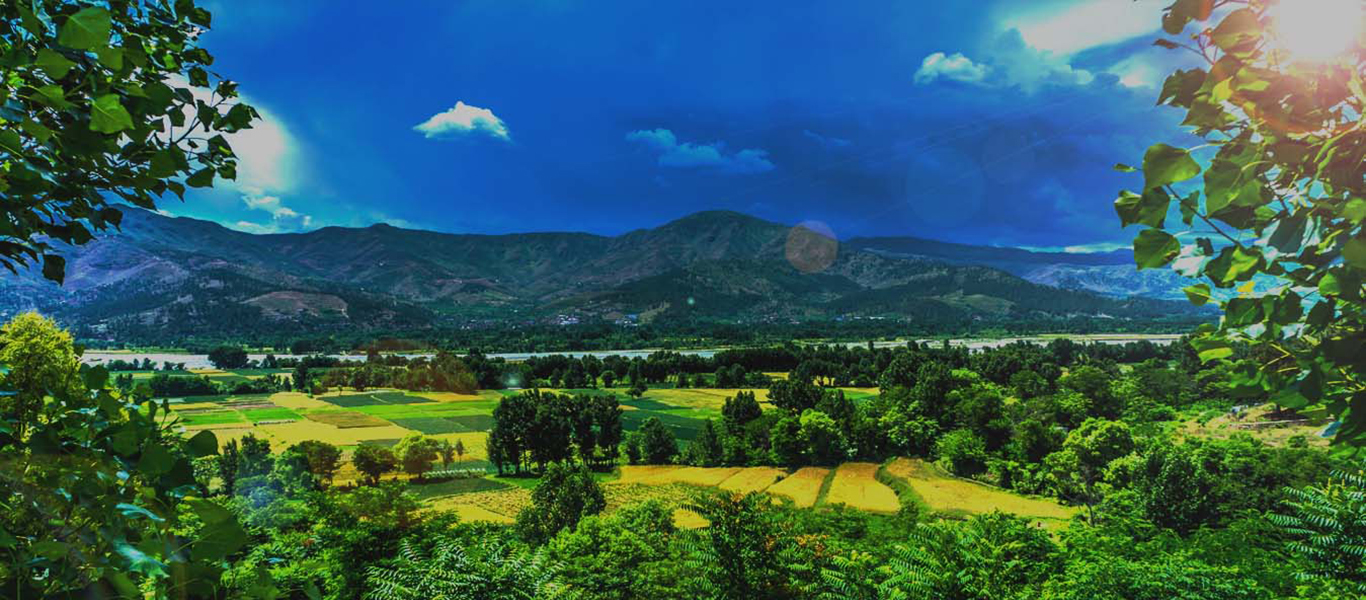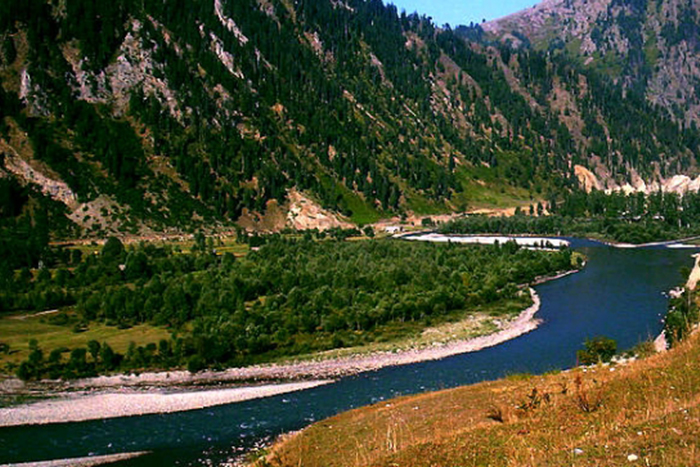

The Bungus Valley is a Himalayan sub-valley of the Kashmir Valley. It is situated in the North area of Kupwara District, in Jammu and Kashmir.
Bungus is 72 Kilometers away from Srinagar and lies at an altitude of 10,000 ft. above sea level. The principal valley is locally known as "Badi Bungus" (Big Bungus) and has an estimated area of about 300 Square Kilometers. It consists of a linear elliptical bowl aligned along the east-west axis and is surrounded by Rajwar and Mawar in the east, Shamasbury and Dajlungun Mountains in the west and Chowkibal and Karnah Guli in the north. Leepa Mountains in the south. A smaller valley known as "Lokut Bangus" (Small Bungus) lies on the north-eastern side of the main valley. Both the valleys comprise level green meadows surrounded by low lying mountains covered with dense pine forests (Budloo).
The valley is traversed by many small streams with nearly 14 tributaries, including the Roshan Kul, Tillwan Kul and Douda Kul. The water of these streams form one of the headwaters of the Kamil River which in turn joins the Lolab stream, thus forming the Pohru River.
Over the years, this valley has remained unexplored but now it is coming up as one of the most exotic places of Kashmir. Just 48 km from District Headquarter, Kupwara, Bungus is a part of a unique ecological area, comprising mountain and grassland with flora, Taiga or Coniferous forest. The Valley which is as beautiful as Gulmarg and Pahalgam, but less spoiled and more pristine is located in Handwara of District Kupwara. This valley is replete with natural vegetation and flowers of wild nature. The vast green plains look like natural tapestries, as if spread by divine hands. Extreme natural beauty, serenity, splendor are few synonyms associated with the majestic Valley of Bungus. It has been proposed to be developed as a Himalayan Biosphere valley by INTACH, on the following criteria.
The biosphere of the Bungus valley is being established to assure that an increasing population, accompanied by expanding settlement, growing mechanization and ensuing development activities does not occupy and modify all areas within the valley, leaving no lands designated for preservation and protection in their natural condition. The proposed biosphere is being established as a design, the policy for securing the benefits of an enduring natural environment for the people of present and future generations.
STD Code:
01955
LBDA:
01955-252333
CEO LBDA:
919419017791
Tourist Office:
01954254439
Winter Sports:
01954254417
HAWS:
01954254550